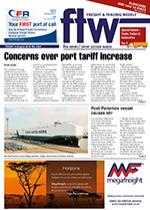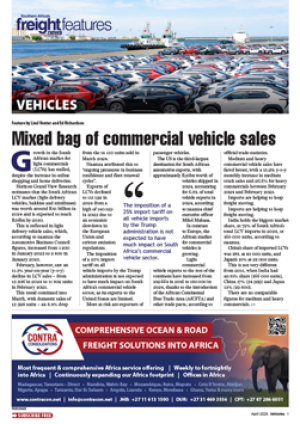The weighted average tariff increase of 4.21% for the 2019/20 financial year proposed by Transnet National Ports Authority (TNPA) last week is more realistic than has been seen by the authority in recent years, according to industry consultant, Mike Walwyn.
“The TNPA’s overall tariff application is definitely not too bad, at least it is a starting point,” he told FTW.
This is an encouraging statement, especially during a time where the Ports Regulator of South Africa has opened the lines for public comment on the tariff increase application and considering the public outcry against last year’s significantly high tariff adjustment request of 8.45%.
TNPA stated in its application that it required R13.681bn in revenue which would be made up of R10.398 billion and R3.284bn in marine and real estate revenue respectively. The 4.21% weighted average tariff increase will also be differentiated into an 8% tariff increase on marine charges and a 2.74% increase in cargo dues.
While Walwyn seemed fairly optimistic about the TNPA’s overall tariff application, he noted that the significant increase in tariffs for marine charges – which relates to the tariffs paid by shipping lines – were concerning.
“You can see in the application that while the ports authority has been relatively nice to cargo, with its low tariff increase for cargo dues, it has not been so nice to ships,” he said. “This could translate as a disincentive for major shipping lines to come to South Africa.”
Walwyn said that marine charges under the tariff application had seen several requests for such increases and that it would become unpayable the more these charges were compounded on one another and if the increases on marine charges continued.
Last year, TNPA called for a 10% increase on marine services, which CEO of the South African Association of Ship Operators and Owners (Saasoa), Peter Besnard, said was extremely high. He noted that when taking into consideration the inconsistencies and unreliability of equipment at the ports, such as the unavailability of tugs, such a significant increase was not justifiable.
Besnard, however, told FTW that he did not want to comment on the tariff application for the next financial year (2019/20) as yet, as he wanted to rather wait for the advocate at Saasoa to look at the application first as he would be the one to make a public comment submission on behalf of the association to the ports regulator.
Walwyn pointed out that under the tariff differentiation for cargo dues, there remained some troubling increases for coal and magnetite. In TNPA’s application, they proposed a 5% increase on dry bulk cargoes, which differentiates into an 8% increase on tariffs for coal and magnetite.
“The increase on coal is especially problematic as the industry is already suffering,” said Walwyn. “The coal market produces around 90 million tonnes per year. To raise tariffs on this market at such an increasing rate would make the industry less competitive and the same applies to magnetite.”
South Africa’s coal industry has progressively been under pressure over the past few years with increasing reports of coal supply issues from Eskom as well as increased competition faced by coal exports from international markets such as Colombia.

